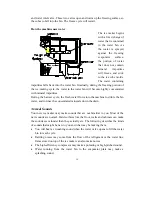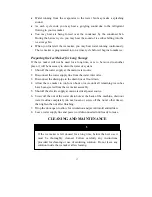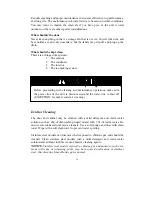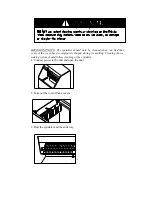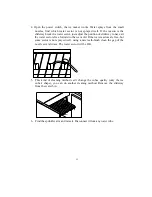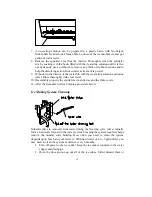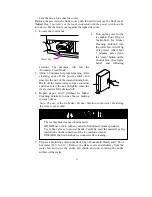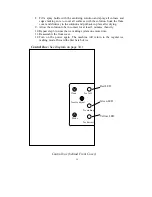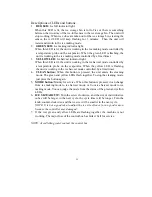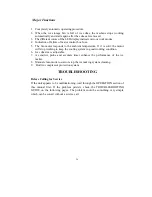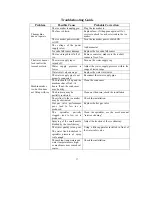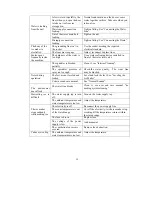
13
receptacle. A stand pipe with a trap below it would be acceptable for the
drain/waste receptacle. A floor drain is also acceptable.
3.
Pour 4 liter of water into the ice storage bin to check for leaks at all drain
connections and at the nut of the drain water hole. Tighten any connections or
nuts that leak.
IMPORTANT: Poor drainage will cause a high rate of ice melting in the ice
storage bin.
Installation Types
This ice maker has been designed for Mobile (free-standing), Enclosed, or
Built-in (sealed) installation.
Mobile installation:
A mobile installation will allow you to install the icemaker free-standing in any
place you desire provided you have access to a water supply and drainage
facilities. You must follow the stated instructions for
a- Electrical requirements
b- Water supply and drain connections
c- Leveling the icemaker.
Enclosed installation:
An enclosed installation will allow you to install the ice maker under a cabinet, or
in a kitchen cabinet provided the required clearance space around the ice maker is
respected. This installation has the same requirements as a mobile installation.
The unit should be placed in the cabinet by sliding it in the cabinet’s opening and
leveled properly.
IMPORTANT: For the Mobile and Enclosed installations you must use flexible
water and drain connections to the water supply and drain. This will allow the
moving of the ice maker for cleaning. Use the water hose and drain hose supplied
with the unit for these connections.
Built-in installation:
When the ice maker is to be built-in, the following additional items must be
observed.
1.
Place ice maker in front of installation location. Remove the feet and place the

















